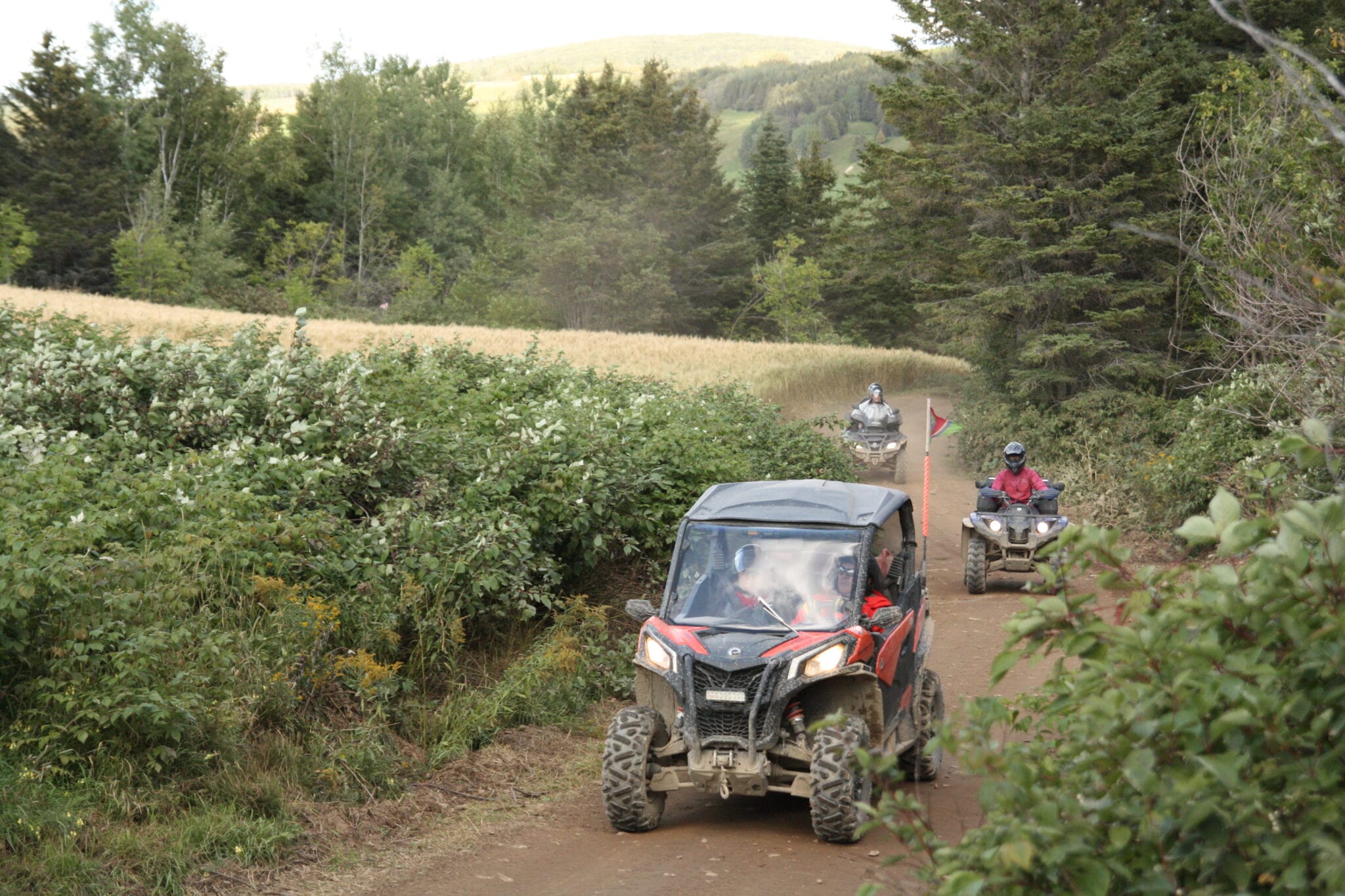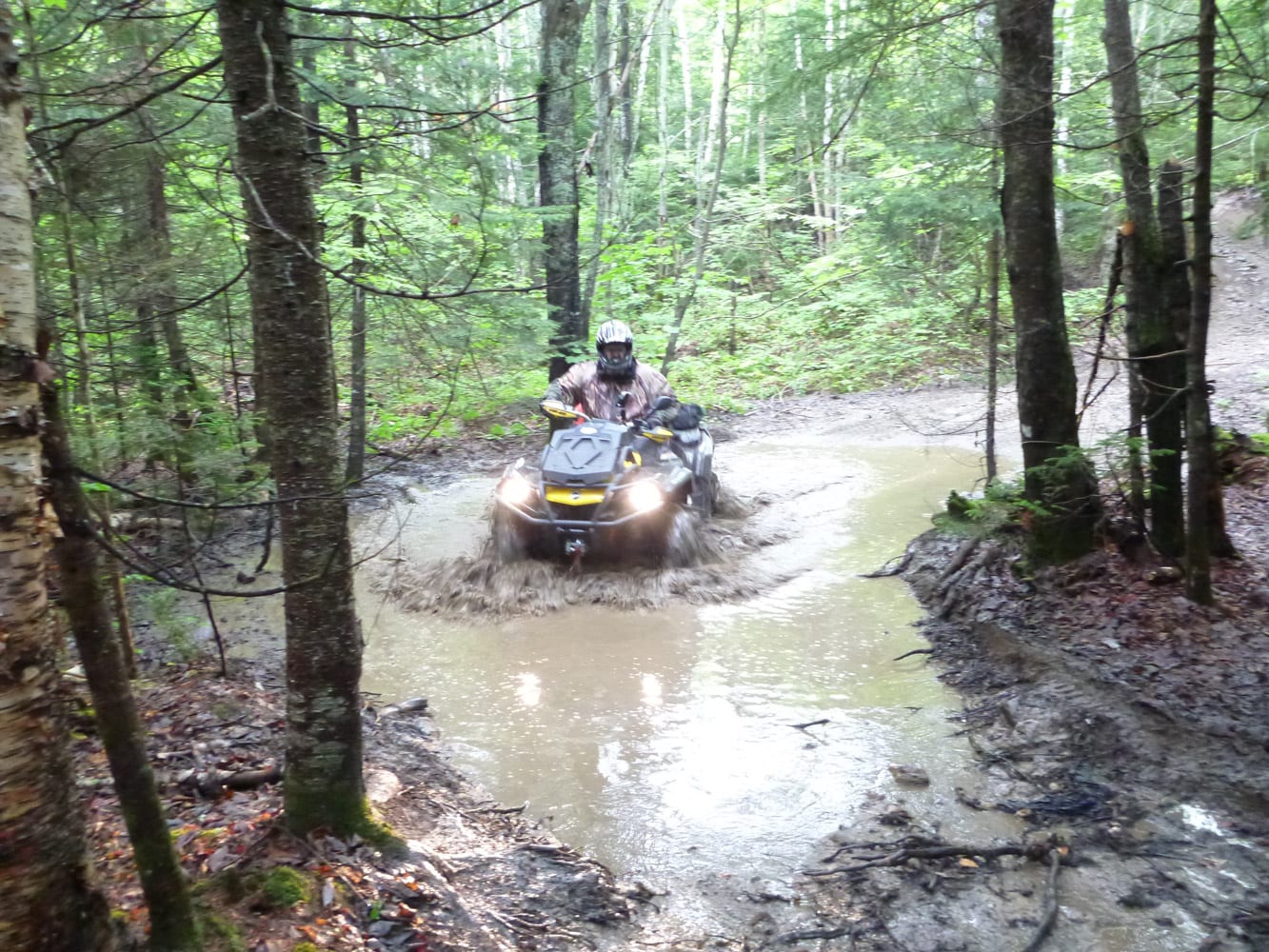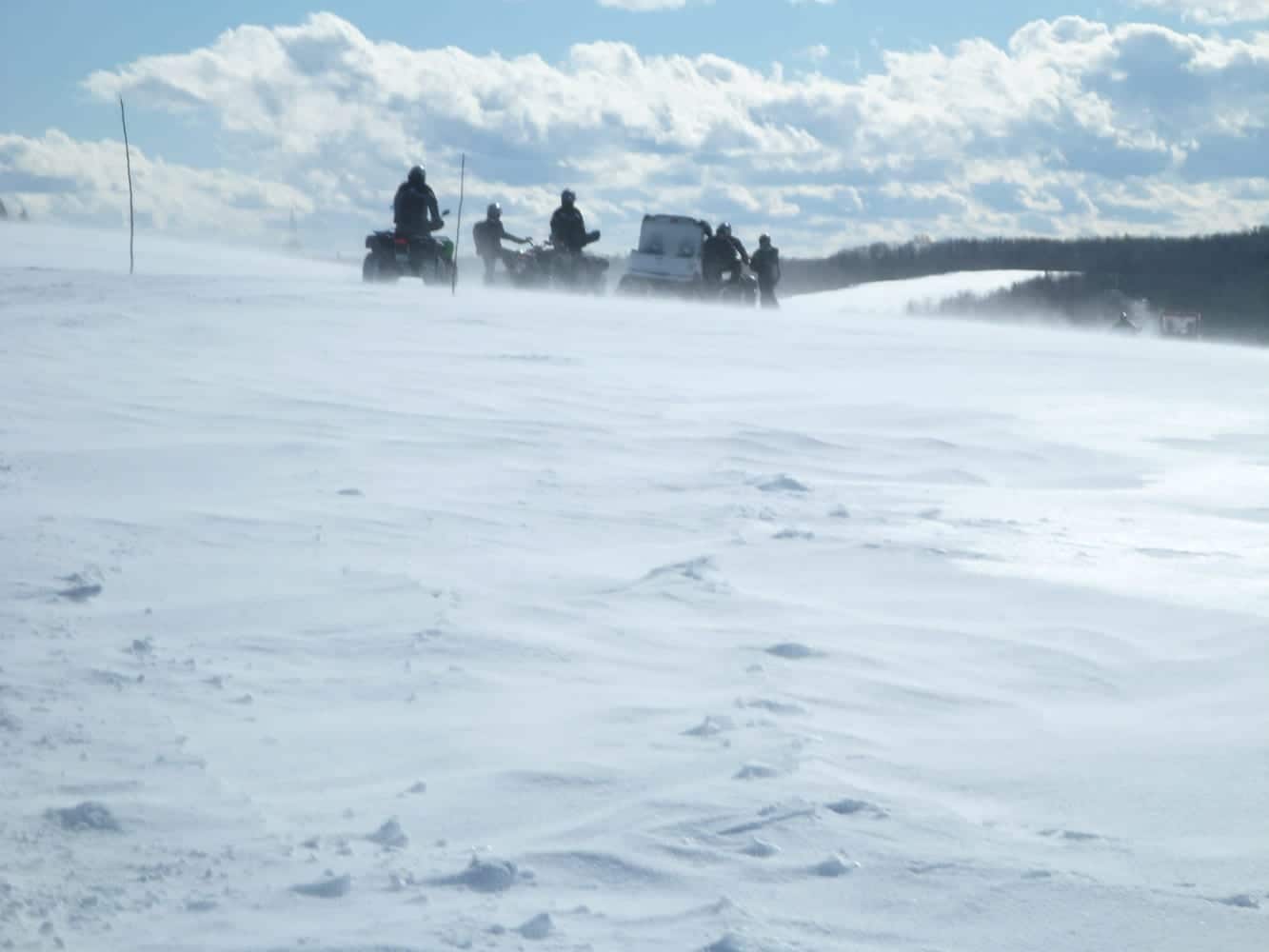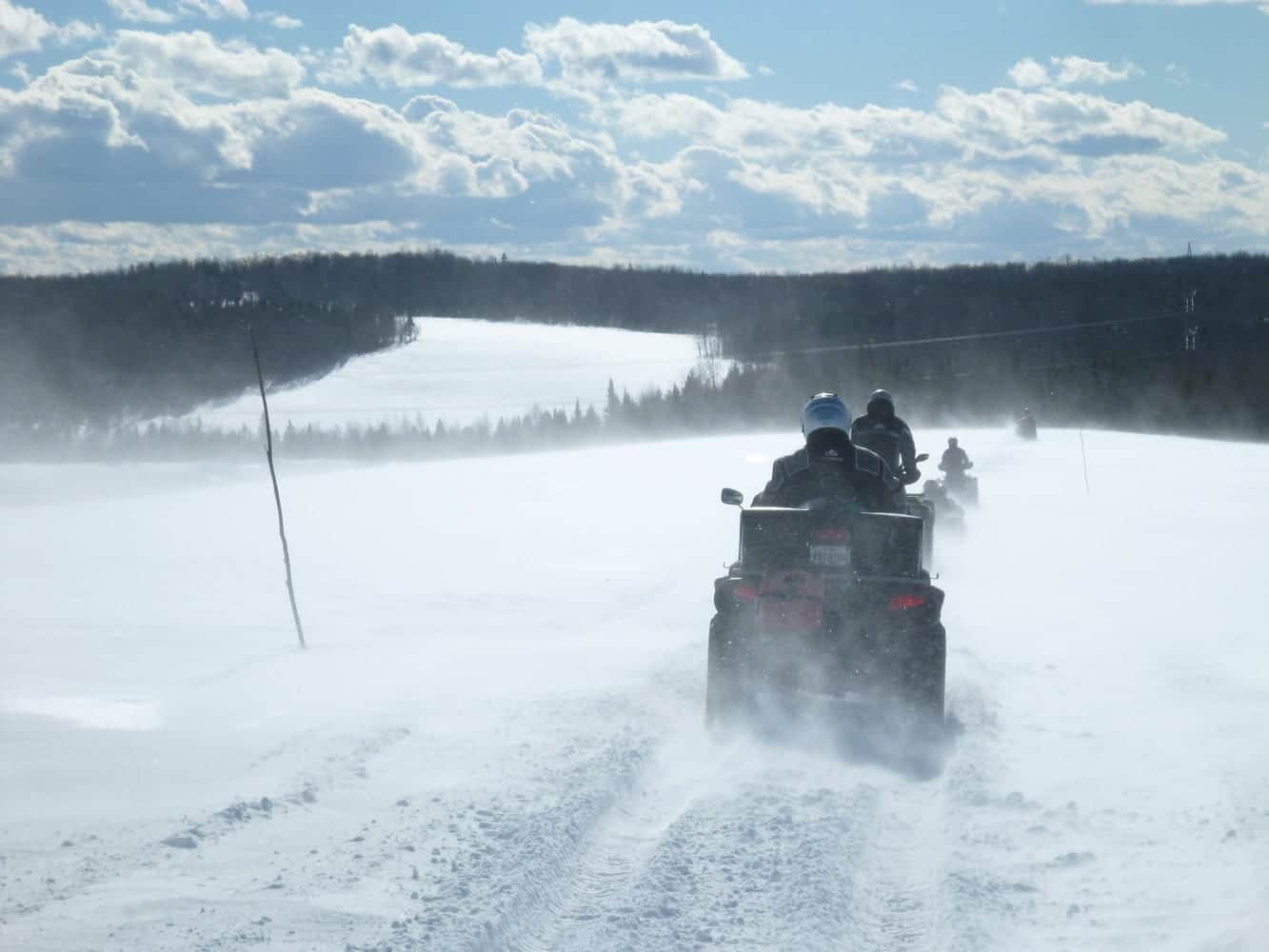We have been talking about the federated quad business model in Quebec for a long time, which is based on the work of volunteers. Many say it’s outdated and that it will collapse in a few years. Despite complications of all kinds that are added from year to year, the resilient volunteers of ATV clubs do their best to respond to demanding club members who summon them to provide top quality trails for which they have “handsomely” paid via the trail access pass they purchased. After all these years of relentlessness, the armor is seriously weakening. And the danger that we expected in a few years is happening this year.
Running into a brick wall
Higher authorities who oversee the quad activity in Quebec predicted a fall of the business model in a near future. Even senior officials of Quebec’s Ministry of Transportation (MTQ) are aware that the Quebec’s ATV Clubs Federation (FQCQ) business plan, which operates to a large extent on the work of volunteers, will not last long. Being aware that time is running out, FQCQ launched a reform plan that began with a round of consultation at its 2019 AGM (Annual General Meeting) and which was to continue throughout the year to culminate at the 2020 AGM. Unfortunately, two waves of COVID have put obstacles in the way and greatly slowed down the consultations: the provincial tour that began in January 2020 ended in October, just before the second wave of the coronavirus. This consultation brought to light a reality: everyone thought we still had a little time to make some changes, but in fact, we already have hit the wall.

I realized this during a regional association meeting that took place last September. I heard a discouraged 76-year-old volunteer talking about how his club could no longer be operated with only four volunteers and 60 members in the winter. Another participant, a club president, explained with sadness that he has been trying for years to keep his club open in the winter, but he cannot ethically take the money from the 200 summer members to open in the winter while he has only 40 members in winter. For that reason, he said that the trail grooming is greatly compromised this winter. If that were to happen, this region, which was flourishing only a few years ago, would be divided into three isolated sections. Suddenly, ATV riders of that region will find themselves going around in circles in one or two clubs and the offer of trails will become much less attractive. This tragic reality is appearing in several regions of the province. How do these brave club operators found themselves up against the wall?
The irreversible mutation
The ATV activity has changed a lot over the past 20 years and the operation of a club is now faced with environmental regulations, tax authorities, social acceptability, trail safety responsibilities, and a clientele of users which has changed enormously, and not necessarily for the best. Many club managers have been through great changes during the past few years, and although they continue to hold the fort to fulfill their mission, they know that a return to the good years is impossible.
Gone are the days when the trails were barely 6 feet wide and the culverts were constructed with old water heater tanks. Want to install some trail signs? No problem, a few handcrafted Coroplast panels and there we go. It was also normal for an ATV to sometimes be submerged all the way to the footrests during a ride and it was okay to activate the four-wheel-drive system on our machine once in a while when the terrain was a little bit harder. Life on the trail was very simple, the obstacles were overcome in a good mood and with resourcefulness. When one looks back on those blessed times and compares them to the quad universe in which we must operate today, we can tell that things have changed a lot and not for the better.
The regulatory labyrinth
First of all, ATV clubs are overwhelmed by the cumbersome administrative paperwork required by the various levels of government. The NPOs are scrutinized more closely by the tax authorities and the clubs must have flawless bookkeeping. Faced with the pitfalls of taxation and the obligation to have an annual accounting report certified by a chartered accountant, clubs must do business with specialized firms. On the environmental side, entrepreneurs, cities, and other corporations are tearing their hair out when they deal with the Ministry of the Environment because of excessive demands for preparatory documents for a project, compensatory rights for wetlands, and other constraints of any kind to make a project succeed. Making an emergency section of trail because of the loss of a crucial right of way is a nightmare. To the extent that when a new trail section is offered by a landowner, club managers will decline the offer if they spot red alder shrubs, a plant characteristic of a humid environment. Venturing there could cost the club a few hundred thousand dollars, with no guarantee that they won’t be kicked off the land the next year by a new owner.
In 2020, ATV clubs are faced with a government machine whose left hand ignores (and doesn’t care) what the right hand is doing. A perfect example is the LVHR Law (Quebec’s off-road vehicle law), managed by the MTQ (Quebec’s Ministry of Transportation), which provides that clubs can obtain a right to make and operate a trail on public land by the MRNF (Quebec’s Ministry of Natural Resources). For its part, the MRNF will refuse to issue permissions and to give traffic exclusivity to the clubs if they take back an abandoned forest path. Even worse, the clubs will have to rebuild bridges of 60 tons of capacity on which the forestry industry can go to collect wood. No wonder why it is so difficult to open new trails in the woods. We could elaborate on the government subject for a long time, but the fact is that clubs must grapple with an inextricable, endless regulatory maze.

Trail vehicles
In the early days of ATV trail riding, people rode Kodiak 400s and were impressed by a Vinson with its new look and style. These lightweight machines floated well on compacted snow and could cope with an average quality of trail grooming, especially if the snow was not compacted deeply. Sports ATVs were criticized for supposedly damaging the trails despite having a ground clearance of six inches. Indeed, the fleet of off-road vehicles has changed considerably since that time. Most sports ATVs have disappeared now and side-by-side vehicles showed up, arousing the curiosity of enthusiasts and attracting new customers. These machines have now passed the critical 50% mark of vehicles purchasing trail access pass.
The problem with side-by-side vehicles is that most ATV clubs have not been able to evolve their trail network to accommodate these machines. They are much more demanding for the operators due to their larger size, weight, and power. Many clubs have struggled to widen their trails to fit a 64-inch UTV, which drained a lot of financial resources. For the winter season, clubs with more financial means (and that are fortunate enough not to pass on farmland) were able to change their maintenance machines to more efficient ones. But the majority of ATV clubs, with the meager annual subsidies that a few of them can get, have to keep their aging snow-grooming machinery for another year. My local club still uses two TM-130 Sure Tracks that I acquired myself in 2006 and 2008 while I was president of this club. Obviously, with the actual funding, the club cannot even consider replacing them and must try to maintain hard-packed snow tracks for off-road vehicles that weigh more than a Honda Civics or Geo Metro of my youth. This is a heavy task, no pun intended.
The problem of the compacted snow surface is one thing, but the dynamic capacities of these bigger and heavier trail vehicles are another. The trail network in the wooded area has not been widened much. What will we do when we meet these machines on a small trail? If we think of the required space to allow two vehicles of the size of a small automobile to cross on a trail, that means the safe trail width should resemble that of a small rural road, which is not the case on a typical ATV trail. Therefore, there is a feeling of fear of encountering a huge UTV that develops among other users. Keep in mind the ATV trails were developed 25 years ago for ordinary ATV. The trails are unsuitable for large UTVs if they take all the available space on the trail, especially if the driver’s mind is to harness the power of his machine by constantly running it at high speeds.
Deficient funding
We cannot analyze the situation without talking about the chronic underfunding of the organized ATV activity in Quebec. How can you ask an organization of volunteers to maintain a network of trails 12 months per year with half of the funding from the snowmobile federation? Government subsidies have not increased for ages, and are limited to those from the MTQ for maintenance of trails and purchase of machinery. The machinery grant is limited to only $ 50,000 while trail grooming machines cost $ 250,000 and up. Unfortunately, (until this year) ATV clubs did not have access to the generous subsidies from CED Canada like snowmobile clubs do. While we welcome this new source of funding for 2021, the damage has already been done and the recovery of the maintenance machine fleet will take several more years.
Right now, many ATV clubs are stuck, as external funding sources have been at about the same level for the past decade, while the cost of rebuilding a culvert has more than increased tenfold for example. The only solution that remains is to increase the cost of the trail access fees, but clubs were reluctant to go that way to avoid the widespread dissatisfaction among members. A $ 35.00 increase was finally requested this year. As anticipated, ATV clubs got a truckload of insults from their members for daring to demand a raise from trail users.

Change of clientele
People on the trails have changed a lot in the last 20 years. When the first ATV clubs came to birth, the fun was to make small rides, relax while riding at low speed, and stop for a coffee break when the sites were interesting. Over time, the distance between destinations has increased and ATV riders were less involved in the effort of developing and maintaining the network. They became customers: they pay their membership card, they want to ride. The attitude of trail users has become very uncompromising towards volunteers who are constantly criticized because the trails are not 100% perfect all the time. This year, some members even wanted to have a rebate on the price of their access pass because of the spring trail closures during the first wave of COVID. This is like giving a slap in the face of every club volunteers.
The situation has become serious because the trail network is already at risk of imploding in some places and the reform efforts undertaken by the FQCQ federation are stuck in the chaos of the Covid pandemic. We thought that the federated organized ATV world in Quebec was acquired forever, but it has started to crumble because the current business model is outdated and the magic of volunteer involvement is no longer enough to compensate.






